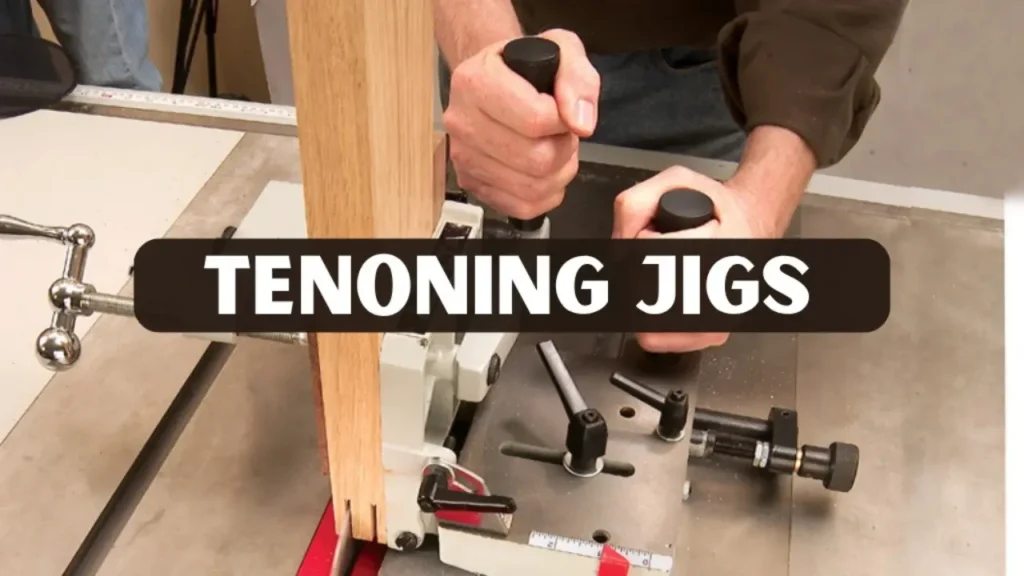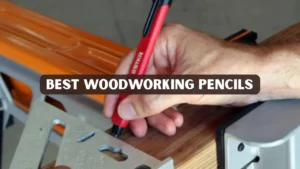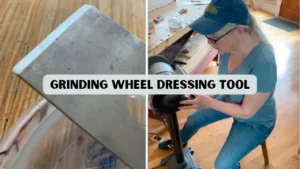Precision defines quality in woodworking. For both beginners and experienced craftsmen, creating durable and accurate joints is essential to producing professional results. One tool that plays a crucial role in achieving this level of accuracy is the tenoning jigs, which helps ensure perfectly aligned cuts and tight-fitting joints that stand the test of time. It’s a must-have for anyone working on furniture, cabinetry, or detailed framing projects.
Understanding how to select, adjust, and maintain this tool can significantly enhance your craftsmanship. With the right setup, it allows for smooth, repeatable cuts that improve both the strength and appearance of your work. Whether you’re refining your skills or aiming for greater efficiency, mastering this precision tool will help you achieve cleaner joints and elevate the overall quality of your woodworking projects.
What are Tenoning Jigs?
A tenoning jigs is a precision woodworking tool that securely holds a workpiece in place while cutting tenons on a table saw or router table. Tenons, which fit into corresponding mortises, create one of the strongest and most reliable joints in woodworking, the mortise and tenon joint. This method is widely used in furniture making, cabinetry, and framing, valued for both its strength and clean appearance.
The main advantage of this tool is the accuracy it provides. Even experienced woodworkers can struggle to make tenons that are perfectly uniform without the right support. By keeping the workpiece stable and guiding it precisely through the blade, it ensures consistent, square cuts every time. This stability also enhances safety by preventing slips and unexpected movements, reducing the risk of mistakes and injuries during operation.
Beyond precision and safety, it helps minimize material waste by delivering repeatable, accurate cuts that require little correction. For beginners, it simplifies a challenging woodworking task, while for professionals, it boosts efficiency and productivity. Its ability to combine accuracy, safety, and consistency makes it an essential tool in any woodworking shop.
Types of Jigs
Understanding the different types of tenoning jigs is essential for selecting the right tool for your workshop. Each type has unique advantages and is suited for different projects and skill levels.
Table Saw Tenon Jigs
Table saw jigs are designed to fit securely into the miter slot of a table saw, guiding the workpiece through the blade with accuracy and control. They are highly versatile, making them ideal for medium to large woodworking projects. With adjustable height and width settings, these jigs can produce tenons of various sizes without compromising precision. This adaptability makes them a valuable choice for woodworkers who frequently switch between different project types or dimensions.
While table saw jigs may appear bulky, they offer superior stability compared to handheld methods. Their solid structure helps maintain consistent alignment during cutting, ensuring every tenon fits perfectly. Once properly set up, they significantly reduce cutting time and minimize errors. The result is professional-quality joints that enhance both the strength and craftsmanship of any woodworking project.
Router Table Tenon Jigs
Router table tenon jigs are well-suited for smaller or more delicate woodworking projects that require precision and smooth finishes. By using a router instead of a saw, they create cleaner cuts that reduce the need for sanding and touch-ups. These jigs are ideal for detailed work such as fine furniture or decorative frames. The router’s precise cutting action ensures uniform tenon dimensions and beautifully finished edges.
Although router table jigs take more time to set up and operate than table saw jigs, their focus on finish quality makes them a top choice for detailed projects. They are slower but excel when accuracy and surface smoothness are the priority. For hobbyists and professionals who value craftsmanship, these jigs offer consistent, polished results. Their ability to combine precision and fine detail makes them a trusted tool in any woodworking setup.
Adjustable vs Fixed Jigs
Tenoning jigs are often divided into two main types: adjustable and fixed. Adjustable jigs allow woodworkers to modify settings to create tenons of different sizes and angles. This flexibility makes them ideal for workshops that work on a variety of projects and require versatility. They are especially valuable for growing woodworkers, as the adjustable features can adapt to changing skill levels and project demands.
Fixed jigs, in contrast, are built for specific dimensions and are best suited for repetitive production tasks. Their straightforward design makes them easy to operate and perfect for projects that require consistent cuts. Because they are simple and stable, fixed jigs offer reliable performance when producing identical tenons repeatedly. Choosing between adjustable and fixed models ultimately depends on the type of work you do and whether you prioritize flexibility or efficiency.
How to Use a Jigs Safely
Using this tool correctly is essential for ensuring both accuracy and safety in woodworking. Begin by choosing a jig that matches your table saw or router table so it moves smoothly and fits securely. Once the jig is attached, clamp the workpiece firmly to prevent any shifting during operation. Even a small movement can throw off the alignment and affect the final result.
Before cutting, take time to adjust the jig’s height, width, and depth according to the size of the tenon you need. It’s always smart to make a few test cuts on scrap wood first to confirm the setup. This step helps you fine-tune the adjustments and ensures that the tenon will fit perfectly into its corresponding mortise once you start cutting.
When performing the actual cut, guide the workpiece slowly and steadily through the blade or router. Avoid applying too much pressure, as forcing the material can cause uneven cuts or damage. Always wear safety gear, including gloves, goggles, and ear protection, and keep your hands well away from the cutting area. By locking the jig securely and following these safety habits, you can achieve precise, professional results while maintaining a safe workspace.
Top Tenon Jigs for Woodworkers
Selecting the right tool for tenon cutting is essential for achieving consistent accuracy and high-quality results. Some models are particularly valued for their precision and ease of use. The Woodcraft Table Saw model is known for its sturdy design and versatility, making it suitable for many types of woodworking projects. The Rockler Router Table version excels with smaller or detailed pieces, producing smooth, clean cuts for fine craftsmanship.
For those who enjoy hands-on work, a DIY adjustable model made from plywood or MDF can be a practical and budget-friendly choice. It allows woodworkers to customize dimensions and settings to match specific needs. When choosing the best option, always consider compatibility with your saw or router table. Material quality and adjustment range are also key factors that influence performance and durability.
Strong materials like aluminum or dense MDF provide better stability and help maintain precision during repeated use. Adjustable designs are excellent for workshops that handle a variety of projects requiring flexibility. Fixed designs are better suited for repetitive work that demands consistent accuracy. Investing in a dependable jig not only saves time but also enhances the overall quality and reliability of your woodworking results.
Tips and Techniques for Perfect Tenons
Even the best jig requires proper technique to achieve flawless results. Aligning the workpiece properly is essential. Ensure that the wood is flush and parallel to the fence before cutting. This alignment guarantees that the tenon will fit accurately into the mortise. Consistent feed pressure is also important. Allow the jig to guide the workpiece rather than forcing it through the blade or router. Marking tenon boundaries with a pencil or marking gauge provides a visual guide for precise cuts and reduces the likelihood of mistakes.
Maintaining sharp tools is critical for smooth cuts. Dull blades or router bits can create rough edges that require additional sanding, reducing the efficiency of the workflow. Practicing on scrap wood is an effective way to refine your technique without wasting valuable materials. It allows you to test settings, adjust for variations in wood density, and develop confidence in your approach. By combining proper alignment, consistent feed, clear markings, sharp tools, and practice, woodworkers can achieve professional-quality tenons with minimal effort.
Maintenance and Care
Regular maintenance keeps your tenoning jig accurate and extends its lifespan. After each use, clean off sawdust and debris, especially from clamps and sliding parts. Dust buildup can reduce precision and cause premature wear, so light lubrication with wax or silicone spray helps it move smoothly. Inspect the jig regularly for wear or damage, ensuring all parts, including fences and clamps, function properly. Proper storage in a dry, dust-free place prevents corrosion, while avoiding heavy loads on top maintains alignment and accuracy for lasting performance.
Conclusion
Tenoning jigs are essential tools for woodworkers who value precision, consistency, and professional-quality joinery. Choosing the right model, setting it up correctly, and maintaining it properly can greatly improve the outcome of your woodworking projects. From beginners to experienced artisans, using tenoning jigs ensures that each joint is accurate, durable, and consistent. Whether crafting furniture, cabinetry, or custom pieces, they enhance both the efficiency and quality of your work.
FAQs
What size tenon jig do I need for my table saw?
The size of the jig depends on the dimensions of your table saw and the types of projects you typically work on. Adjustable jigs offer the flexibility to accommodate various tenon sizes, making them ideal for workshops that handle multiple project types.
Can I make a jig myself?
Yes, DIY tenon jigs can be constructed from plywood or MDF. With careful measurements and the correct clamps, a homemade jig can be highly effective and cost-efficient, particularly for hobbyists or small workshops.
Are tenon jigs suitable for beginners?
Absolutely. Tenon jigs simplify complex joinery and make it easier for beginners to achieve professional-quality results. They provide stability, accuracy, and consistency, which are especially helpful for those who are new to woodworking.
How do I clean and maintain my jig?
Cleaning and maintenance involve removing sawdust, lubricating moving parts, and inspecting components for wear. Regular upkeep ensures that the jig maintains its accuracy and extends its useful life.
Can I use a tenon jig with a router table?
Yes, router table jigs are specifically designed to allow smooth, controlled cuts for smaller or more intricate pieces. They are excellent for projects that require a fine finish and precise detailing.




